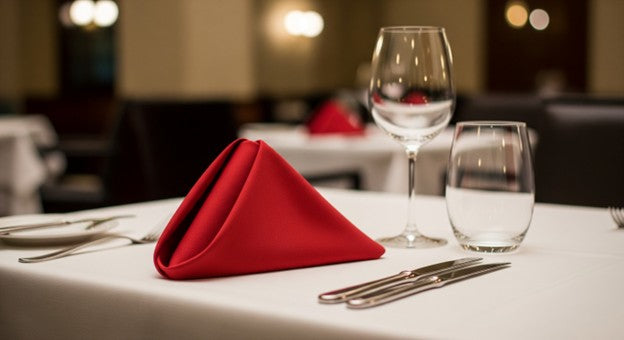TLDR:
In an interview with Gary Vaynerchuk, entrepreneur and host of the TV series Bar Rescue, Jon Taffer gave the live-stream audience some solid advice on customer acquisition and retention. A restaurant owner asked Taffer, “How do I ensure my customers return?”
Taffer gave the caller blunt advice, beginning with the cost of customer acquisition. Taffer estimated that, using traditional media (e.g., radio, flyers), a new customer’s procurement cost is between $40 and $80 for a first visit. Working backwards, he then estimated that the food cost of a typical rib dinner would be about $5. Taffer advised the restaurateur to distribute 100 coupons for a free rib dinner to any patron who has not tried the restaurant before. When a patron arrives at the restaurant, you have successfully acquired that first-time guest for $5 in food costs and some expenses for the distribution of the coupons, but certainly nothing like the $40-$80 expense of traditional media.
Now, Here’s Where it Gets Interesting
 If a first-time restaurant guest has a flawless dining experience, Taffer estimates the statistical likelihood of returning for a second visit is about 40%. If the customer returns for a second visit, the probability of a third visit bumps up to about 42%. If the guest’s third visit is flawless, the likelihood of a fourth visit zooms to more than 70%. Taffer says, “You have to market to three visits, not one. This is the part everyone misses!”
If a first-time restaurant guest has a flawless dining experience, Taffer estimates the statistical likelihood of returning for a second visit is about 40%. If the customer returns for a second visit, the probability of a third visit bumps up to about 42%. If the guest’s third visit is flawless, the likelihood of a fourth visit zooms to more than 70%. Taffer says, “You have to market to three visits, not one. This is the part everyone misses!”
But how do you make sure those customer experiences are flawless? This is where the red napkin strategy is deployed. When first-time guests come to the restaurant, they are seated at a table with red napkins, not the usual white ones. The red napkin signals to all the restaurant staff that this is a first-time customer and for everyone to go the extra mile.
If the staff has done everything right and the meal was great, the probability that the customer will return for a second visit is now 40%. A smart manager, someone who understands customer lifetime value, will incentivize a second visit. Taffer suggests that the manager approach the diner as they finish the meal and ask them how it was. If the guest is happy with the rib dinner, the manager now says, “Well then, you have got to try my chicken. Come in for the chicken!”And on the back of a business card, he handwrites “$5 off chicken.”The customer receives the card and is prompted to return again.
When the customer arrives for the second visit, the restaurant staff knows they are a second-time visitor because they have a hand-written card. After the meal, the manager will ask how the experience was, and if it was great, will say, “Man, next time you've got to try my cheesecake,” and handwrite on a business card, “free slice of cheesecake.”
It's All in the Numbers

From a numbers perspective, the restaurant’s customer acquisition cost is $5 in food for the rib dinner, the discounted price covered the chicken dinner, and the slice of cheesecake is $1.35. In other words, for $6.35, the restaurant has acquired a customer with a 70% probability of visiting a fourth time for a full-priced meal. This is an example of how smart operators entice customers to repeat purchase and ease them into the full potential of their lifetime customer value.
First impressions are powerful and can influence someone’s perspective for a lifetime. But so do second impressions and third. Taffer is saying that businesses have to drive the positive impact of that first impression deeper into the customer’s brain by exemplary second and third impressions. In this example, it’s only after that third positive impact that the customer’s affinity for your business will significantly rise.
Applying the "Red Napkin Strategy" to Your Shopify Store
For a DTC e-commerce brand, the "red napkin" isn't a physical item but a digital tag, and the "flawless experience" is defined by your fulfillment and post-purchase communication. The goal remains the same: to strategically convert a first-time buyer into a loyal, repeat customer by focusing on their first three purchases. Here is how you can adapt these principles:
1. Identify Your "Red Napkin" Customer
In Shopify, your "red napkin" is the "new customer" tag. When an order comes from a new email address, your system should automatically tag this person as a first-time buyer. This tag is the signal to your entire "staff" (your automated systems, your fulfillment team, and your customer service) to treat this order with special care.
2. Deliver the First Flawless Experience
 A first-time e-commerce customer is at their highest point of skepticism. The first order must be perfect.
A first-time e-commerce customer is at their highest point of skepticism. The first order must be perfect.
- Fulfillment: Tagging the order as "first-time buyer" in your fulfillment software (like ShipStation) can trigger a special rule. This rule could instruct your packing team to include a high-quality, handwritten thank-you note from the founder.
- Unboxing: This is your one chance at an in-person impression. Ensure the packaging is premium and the unboxing experience feels exceptional. You could even include a small, low-cost (but high-perceived-value) free gift that complements their purchase.
3. Personally Incentivize the Second Purchase
Just like the manager approaching the table, your "manager" is a personal email from the founder. After the customer's order is marked as "delivered," trigger an automated email that doesn't look automated.
- The "Manager" Email: Send a plain-text email from your personal (founder's) name, not from "marketing@."
- The "Handwritten" Offer: Thank them for their first purchase. Then, make a specific, personal offer to encourage a second visit. Instead of a generic "10% off," try:
- "Hi [Customer Name], I saw you just received your [Product Name]. As a personal thank you for trying our brand, I'd love for you to experience our [Complementary Product Category]. Here is a code for $20 off that specific collection, good for the next 30 days."
4. Secure the Third Purchase to Build the Habit
When that customer returns using their special code, your system now knows they are a "second-time buyer." This is the most critical step. After their second order is delivered, it's time to lock in the loyalty.
- The "Second Visit" Email: Send another personal email, this time acknowledging their loyalty.
- The "Next Level" Offer: This offer should reward their trust and build the habit.
- "Hi [Customer Name], welcome back! We're so glad you returned. Loyal customers like you are the reason we built this brand. As a small token, I'd like to personally offer you free shipping plus a free [Accessory Name] with your third order."
By investing this focused attention and margin into the first three transactions, you have guided the customer from a skeptical first-timer to a valued repeat buyer. The probability that they will return for a fourth, full-price purchase—and go on to become a true brand advocate—is now dramatically higher than if you had just hoped they'd come back on their own.





